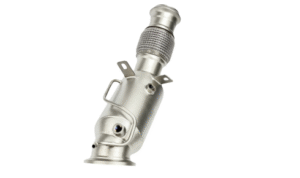What is a Motivation Letter? A motivation letter, also known as a personal statement or statement of purpose, is a document that accompanies a scholarship application. It serves as an opportunity for the applicant to showcase their motivation, aspirations, and qualifications, providing insights into their personality and why they are the ideal candidate for the scholarship.
The Importance of a Motivation Letter A well-crafted motivation letter can significantly impact the scholarship selection process. It allows the applicant to stand out among other candidates by demonstrating their unique qualities, goals, and dedication. A compelling motivation letter helps the selection committee understand the applicant’s suitability for the scholarship and why they deserve to be chosen.
Understanding a Motivation Letter
Definition and Purpose A motivation letter serves as a medium for applicants to express their passion, goals, and reasons for applying for a specific scholarship. It provides context to the applicant’s background, academic achievements, and future aspirations. The purpose of a motivation letter is to convince the scholarship committee that the applicant is genuinely motivated, deserving, and a good fit for the program.
Difference between a Motivation Letter and a Cover Letter While a cover letter accompanies a job application and focuses on skills and qualifications, a motivation letter emphasizes personal motivations, aspirations, and suitability for a scholarship. It allows the applicant to showcase their individuality and passion beyond their academic achievements, making it a crucial component of a successful scholarship application.
Purpose of a Motivation Letter
Expressing Your Passion and Motivation A motivation letter provides an opportunity for applicants to express their genuine enthusiasm and passion for their field of study or research. By sharing personal stories and experiences that ignited their interest, applicants can demonstrate their dedication and commitment to their chosen area.
Demonstrating Fit with the Scholarship Program An effective motivation letter shows the alignment between the applicant’s goals and the objectives of the scholarship program. It highlights how the applicant’s academic and career aspirations align with the scholarship’s mission, values, and specific focus areas. This demonstrates that the applicant has done thorough research and understands the program’s requirements.
Highlighting Your Achievements and Qualifications A motivation letter allows applicants to showcase their academic achievements, extracurricular activities, and relevant experiences. By highlighting accomplishments and demonstrating the skills they have developed, applicants can prove their suitability for the scholarship and their potential to make a significant impact in their chosen field.
Key Components of a Motivation Letter
Opening Paragraph: Attention-Grabbing Introduction The opening paragraph sets the tone for the motivation letter. It should be engaging, captivating the reader’s attention from the beginning. This can be achieved by sharing a personal anecdote, a thought-provoking quote, or an impactful statement that reflects the applicant’s passion and motivation.
Body Paragraphs: Showcasing Your Motivation The body paragraphs form the core of the motivation letter. Each paragraph should focus on a specific aspect of the applicant’s motivation and qualifications, providing supporting evidence and examples.
Personal Background and Inspiration In the first body paragraph, the applicant can introduce their personal background, including experiences or challenges that have influenced their decision to pursue the scholarship opportunity. It is essential to convey the applicant’s unique perspective and how it has shaped their motivations.
Academic and Career Goals The second body paragraph should highlight the applicant’s academic and career goals. It is crucial to demonstrate a clear sense of direction and show how the scholarship will contribute to the applicant’s future plans.
Relevance to the Scholarship Program In the third body paragraph, the applicant should establish a strong connection between their aspirations and the scholarship program. They should discuss specific elements of the program that align with their goals and explain how they intend to leverage the opportunity to make a meaningful impact.
Conclusion and Future Plans The fourth body paragraph should summarize the applicant’s motivations, achievements, and aspirations. It should reaffirm the applicant’s commitment to their chosen field and emphasize their enthusiasm for the scholarship opportunity. The paragraph should conclude with a glimpse into the applicant’s future plans and the positive impact they hope to create.
Closing Paragraph: Summarize and Express Gratitude The closing paragraph provides an opportunity to summarize the main points and express gratitude to the scholarship committee for considering the application. The applicant can reiterate their passion, motivation, and excitement for the opportunity.
Preparing to Write a Motivation Letter
Research the Scholarship and Organization Before starting to write the motivation letter, it is crucial to thoroughly research the scholarship program and the organization offering it. Understanding the program’s objectives, values, and eligibility criteria will enable the applicant to tailor their letter accordingly and highlight their suitability.
Self-Reflection and Goal Setting Applicants should engage in self-reflection to identify their strengths, weaknesses, and motivations. They should set clear goals and articulate how the scholarship will help them achieve those goals. This introspection will add depth and authenticity to the motivation letter.
Gather Relevant Experiences and Achievements Applicants should take stock of their academic achievements, extracurricular activities, internships, research projects, and any other experiences relevant to their field of study. These accomplishments will serve as valuable evidence to support their claims and enhance their credibility.
Structure and Format of a Motivation Letter
Length and Conciseness A motivation letter should be concise and focused. While there is no strict word limit, it is advisable to keep the letter to one or two pages. The applicant should prioritize quality over quantity and ensure that every sentence adds value to the overall message.
Proper Formatting and Spacing The motivation letter should be formatted professionally and follow a standard structure. It should be single-spaced with clear paragraphs, appropriate margins, and a professional font. The use of subheadings can enhance readability and organization.
Writing Tips for an Effective Motivation Letter
Personalize the Letter Each motivation letter should be personalized for the specific scholarship program. Applicants should avoid using generic templates and instead tailor the content to reflect their individual motivations, experiences, and aspirations.
Use Specific Examples and Details Applicants should use concrete examples and specific details to illustrate their achievements, experiences, and goals. This adds depth and authenticity to the motivation letter and makes it more memorable for the selection committee.
Showcase Enthusiasm and Confidence The motivation letter should reflect the applicant’s genuine enthusiasm and confidence. By using positive language, strong verbs, and showcasing their genuine passion, applicants can create an engaging and persuasive letter.
Proofread and Edit for Clarity and Grammar Before submitting the motivation letter, applicants should proofread it carefully for clarity, grammar, and spelling errors. It is helpful to seek feedback from mentors, teachers, or peers to ensure that the letter is error-free and effectively communicates the intended message.
Common Mistakes to Avoid in a Motivation Letter
Generic and Cliché Language Using generic language and clichés can make the motivation letter appear unoriginal and less impactful. Applicants should strive for unique and authentic expressions of their motivations and aspirations.
Lack of Focus and Coherence A motivation letter should have a clear focus and maintain a logical flow of ideas. Applicants should avoid deviating from the main points or including irrelevant information. It is crucial to review the letter to ensure that it maintains coherence throughout.
Grammatical and Spelling Errors Grammatical and spelling errors can significantly diminish the credibility of a motivation letter. Applicants should proofread their letter thoroughly and use grammar-checking tools to ensure that it is error-free.
Examples of Motivation Letters
Motivation Letter for a Master’s Degree In this example, we will explore a motivation letter written by an applicant seeking a scholarship for a master’s degree program. The letter effectively showcases the applicant’s passion for their field of study, relevant experiences, and future aspirations.
Motivation Letter for a Study Abroad Program This example highlights a motivation letter written by an applicant applying for a scholarship to participate in a study abroad program. The letter emphasizes the applicant’s desire for cultural immersion, academic growth, and global understanding.
A well-crafted motivation letter plays a crucial role in securing a scholarship. By effectively conveying their motivations, aspirations, and qualifications, applicants can stand out among other candidates. Through careful research, self-reflection, and the use of specific examples, applicants can create a compelling and authentic motivation letter that increases their chances of receiving the scholarship.








